Munich is Bavaria’s capital and home to centuries-old buildings, and a lengthy list of museums, fantastic beer halls, and restaurants. The city is famous for its annual Oktoberfest which is the largest Oktoberfest celebration in the world and is a city that has seriously, so much to offer on your trip to Germany (or Europe).
I visited Munich for about four days on my Europe trip back in September. The primary reason for our visit was to go to Oktoberfest, a bucket list item for me, but we of course wanted to enjoy as much of the city as we could. So here is my guide to help you plan the ultimate stay in Munich too!
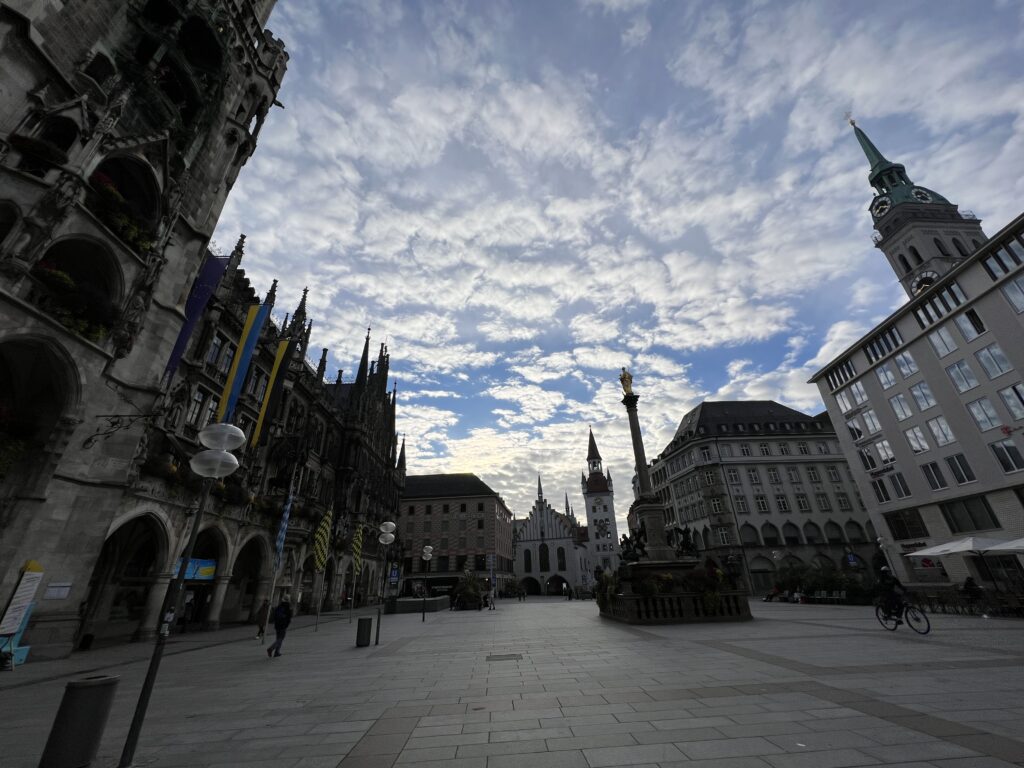
Getting around Munich
Munich has such a fantastic transit system that spams the city and the suburbs outside of the city too. It is serviced by an S-Bahn, U-Bahn (both trains/subways), Trams, and Buses. I found riding transit to be so efficient, on time, and easy to navigate even if you don’t understand German.
Read my full guide to Munich’s transit system here
On top of the public transit system, there are also bike shares available (through MVG Rad), e-scooter sharing, and the city is serviced by taxis and Ubers as well.
Of course, if you’re staying centrally, most tourist attractions are within walking distance if you’re okay with getting your steps in too!
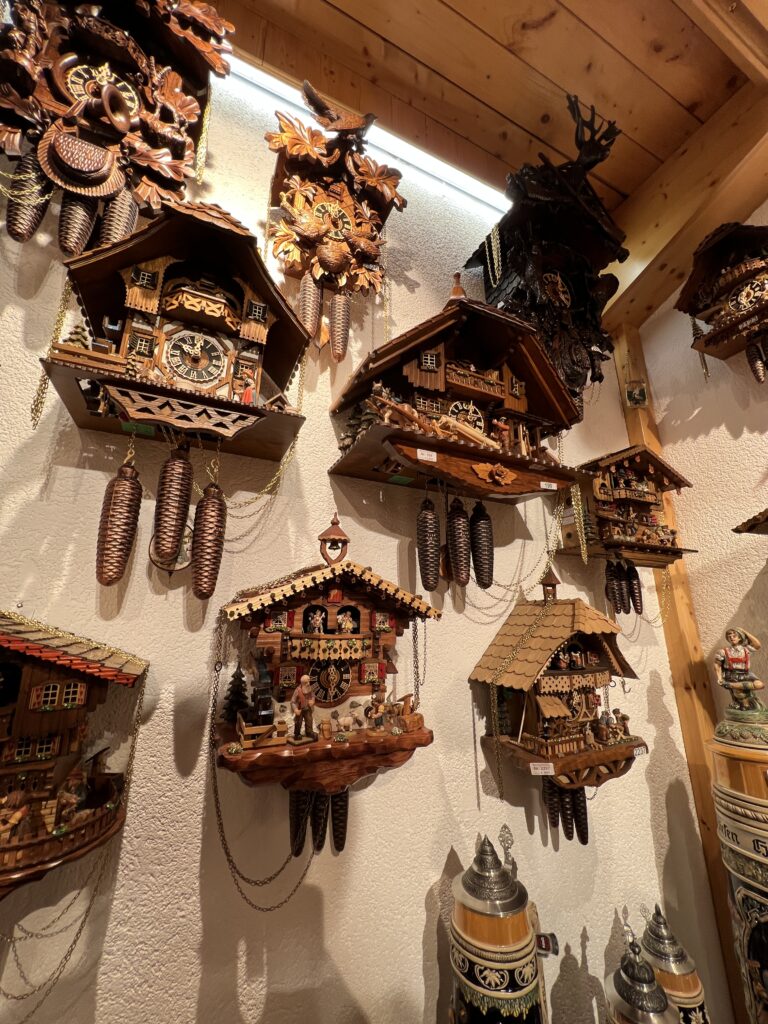
Where to stay in Munich
If you’re visiting during Oktoberfest (at the end of September/beginning of October) then be prepared to struggle to find accommodations. Things book up FAR in advance so you’ll be limited to what’s available. However, if you are visiting outside of Oktoberfest, here is a guide on the key neighbourhoods that you can choose based on how central you want to be.
Altstadt: The historical center of the city. The Old Town is packed with historic buildings, squares, museums, shopping, and the list goes on. This is really the key neighbourhood for major must-sees in Munich like the city’s main square – Marienplatz, the Residenz, and Viktualienmarkt. If you want to be incredibly central to key tourist spots, this is the neighbourhood you should try to get a hotel in but be warned they’ll be a bit more expensive here.
Bahnhofsviertel: This is a compact district just south of the main, central train station. This area is walkable into the Old Town and could be a good alternative to be close to Alstadt but not directly to it.
Maxvorstadt and Schawbing: These are the second most popular areas to stay in and are just north of Alstadt. Maxvorstadt is known as the Museum Quarter and is full of world-class galleries and museums. Schawbing is a student area known for its beautiful architecture. It’s also alongside the Englischer Garden which is the largest inner-city park in the world and a great spot to hang out on a hot summer day.
Olympiapark: This is actually the area we landed a hotel in during Oktoberfest and although it wasn’t as central, it was easily connected by tram to the key train station and Old Town. This area was once home to the 1972 Olympics. There are great pockets of restaurants in this area so if you don’t want to travel all the way down to Old Town you won’t be short of finding authentic places to eat here.
Ludwigsvorstadt: This is actually where the main site of Oktoberfest is located, but this area is also known for its multiculturalism and nightlife too. Naturally, if you can score a spot here during Oktoberfest you’re set up for an easy commute to the festival grounds but this can also be a great alternative spot to base yourself outside of the busy Oktoberfest season too. Its sister district, Isarvorstadt is known as the LGBTQ+ district.
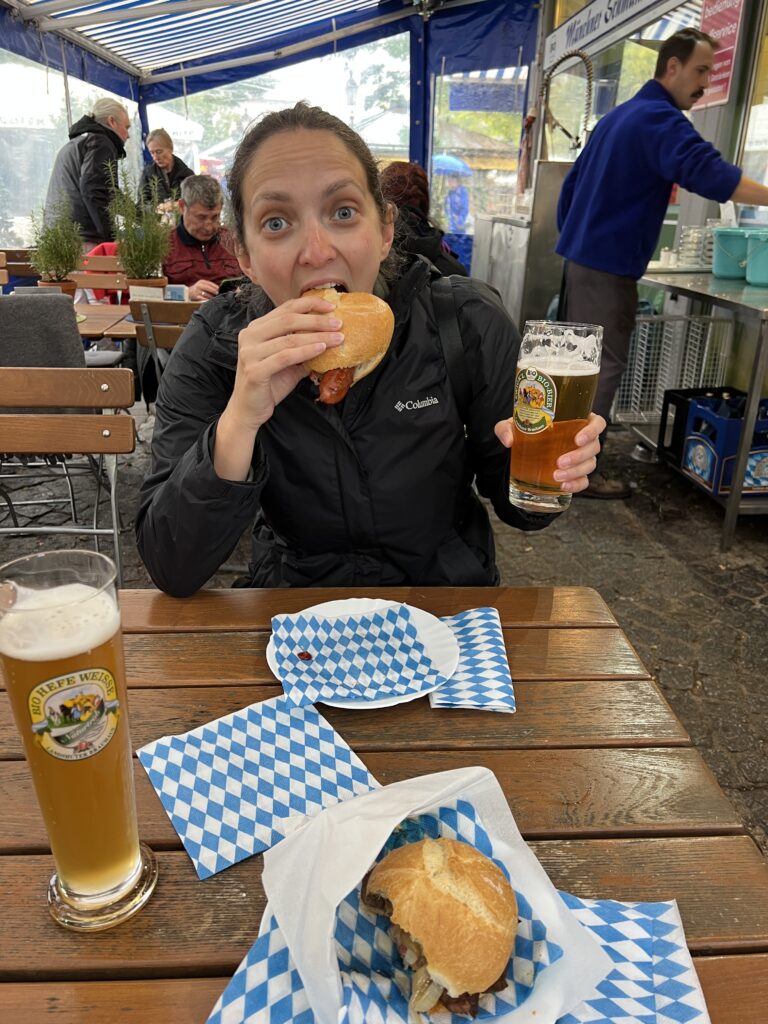
Where to eat
We traveled from Italy to Munich and after the amazing Italian food, I didn’t have much of an expectation for German food. I was actually blown away by how good it ended up being. Naturally, it’s a lot of meat, potatoes, carbs, etc. versus fresh veggies, but it was seriously good for our short stay there and we had no issues finding authentic restaurants and beer halls to try.
Of course, there are so many great restaurants, and you can find ANY type of food and cuisine in Munich, but here were just some of my favourites that we ate at during our time there:
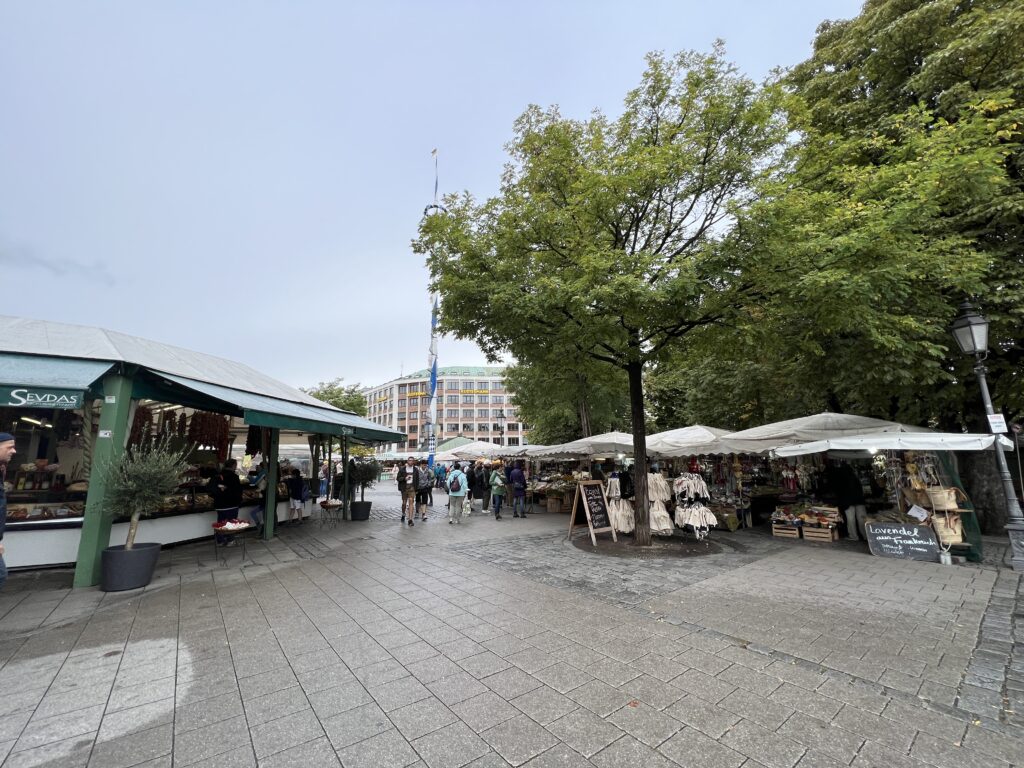
Viktualienmarkt: We ate in this open-air food market for multiple quick (and cheap) lunches or breakfasts. There are several stalls serving up a variety of traditional eats, fresh fruit, veggies, warm pastries, etc. This can be a budget-friendly way to try a ton of authentic food on a budget. There are also some patios (that are covered during the cold/rainy months) that you can sit and eat at, and grab a fresh beer.
Augustiner Stammhaus: Restaurant & beer hall of the historic brewery, serving Bavarian dishes in an art nouveau building
Löwenbräukeller: A beer hall and event center located in Maxvorstadt
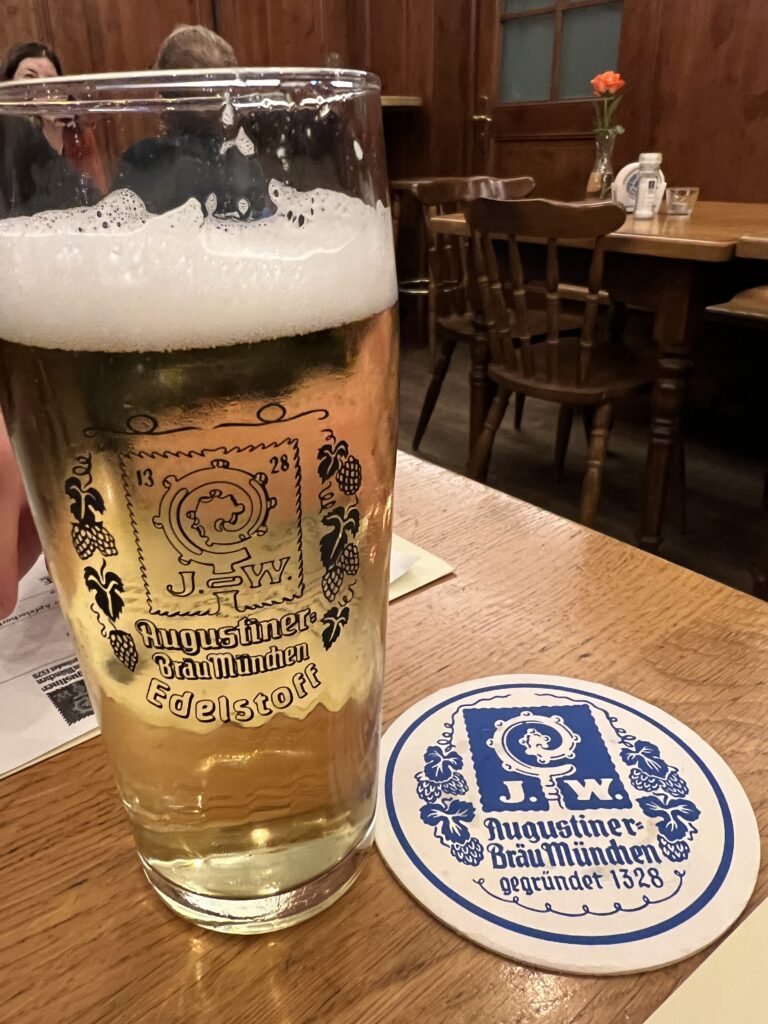
Augustiner-Keller: Landmark restaurant that is known for its large beer garden, and hall, serving Bavarian dishes
Ayinger am Rotkreuzplatz: Bavarian restaurant
Königlicher Hirschgarten Restaurant: Restaurant and beer garden next to a deer enclosure, with simple regional food, and a wide range of beer
Görreshof Wirtshaus: Cozy, rustic tavern with a beer garden, serving traditional Bavarian-style cuisine
SEEHAUS im Englischen Garten: Upscale European restaurant focused on seafood, with a rustic wooden interior and lakeside beer garden
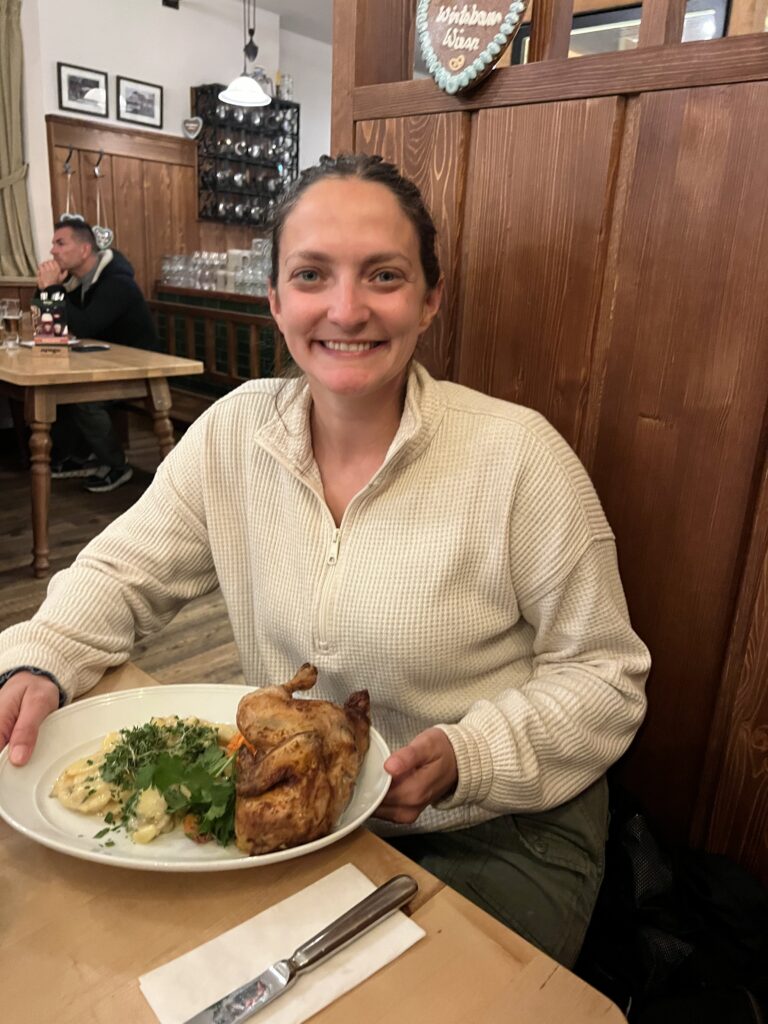
Neuhauser Augustiner: Informal tavern serving traditional entrees, charcuterie boards & draft beer, plus a terrace
Hirschau im Englischen Garten: Bavarian restaurant with a large beer garden that hosts live music
Hofbräukeller: Classic Bavarian restaurant in a neo-Renaissance building, with a large beer garden and Hofbräuhaus beer
Andy’s Krablergarten: Relaxed restaurant and a beer garden serving hearty Bavarian sides, grills & schnitzels
Augustiner Schützengarten: Casual beer garden serving local eats such as schnitzel, meat dishes, desserts (and of course, beer)
What to eat
If you’re wondering what foods you need to try, here are just some of my suggestions:
Sausage: You’ll find sausages of all kinds in Munich (and Germany) but here are some of the kinds you should go for. Weisswurst is a white sausage made with veal and pork and flavored with herbs and spices, Bratwurst is one of the most famous sausages typically made with veal, beef, or pork. Blutwurst is their blood sausage, and Currywurst is a dish made with sausage and doused in a tomato and curry sauce that is so good.
Here is a detailed guide on German sausages to reference
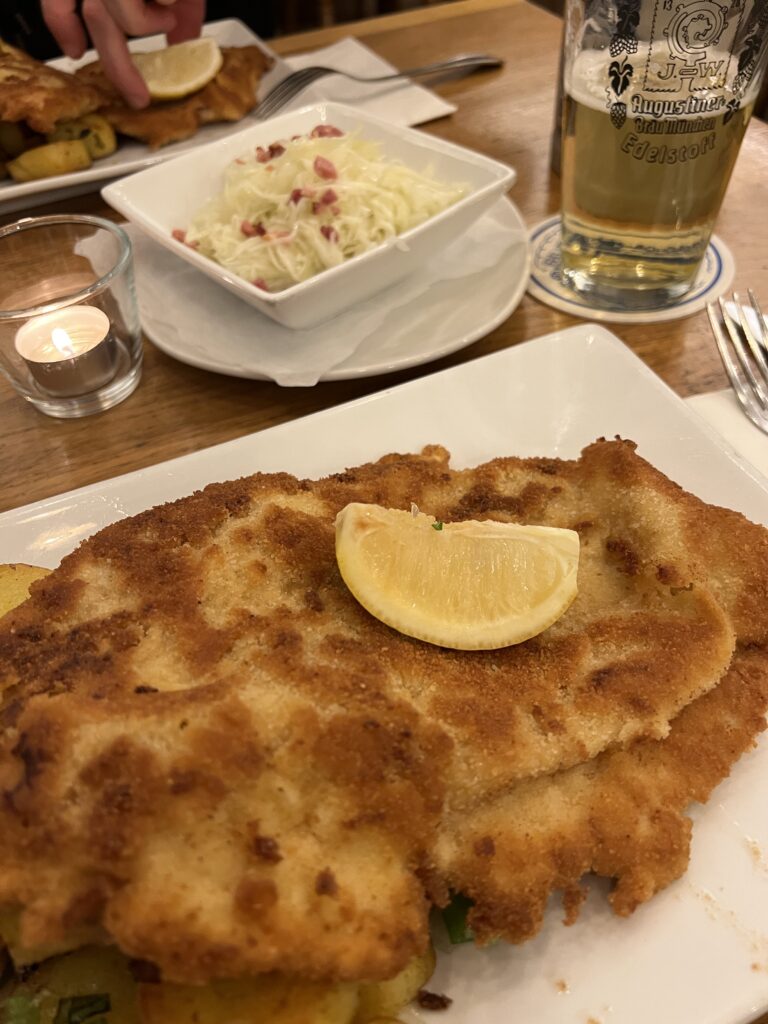
Schnitzel: Next to the abundance of sausage I ate in Germany, I ate a ton of schnitzel too. Schnitzel is a breaded and fried cutlet, usually made with veal or pork and served with spätzle (German mac & cheese), potatoes, or salad.
Knödel: Boiled dumplings made with potatoes grated or mashed into a dough and mixed with eggs and flour. The large balls are then steamed or boiled and served as a side dish to meat or in soups. There are several variations of these you’ll find.
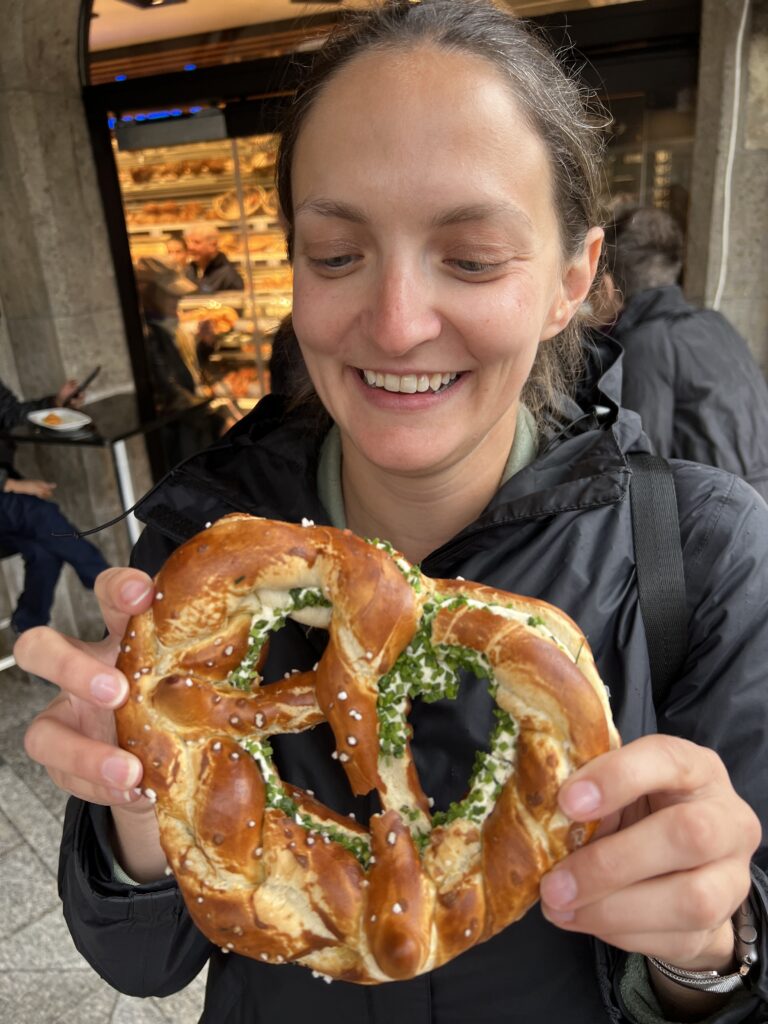
Pretzels: You don’t need me to tell you what these are but the ones in Germany come in different flavors, sweet and savory, and are so fresh, big, and delicious. They will sometimes be called breze or brezel.
Haxen: You’ll see this everywhere in traditional restaurants. Essentially, haxen is roasted ham hock aka pork knuckle. It’s meaty, slow-roasted, and delicious.
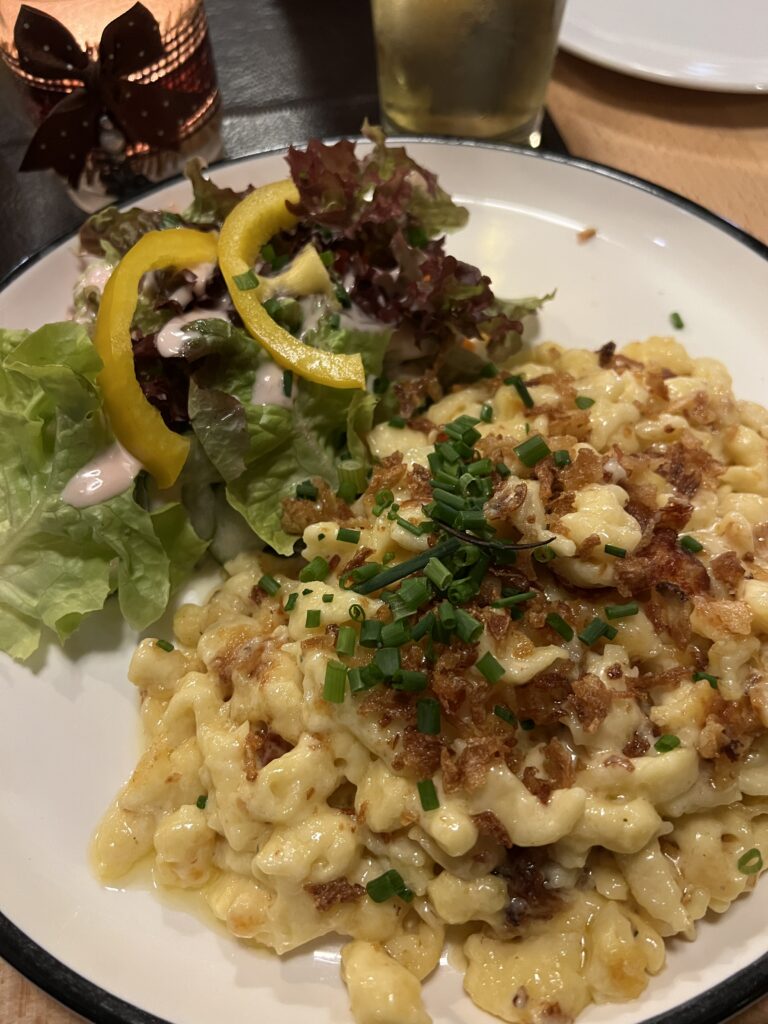
Spätzel: The German version of mac and cheese made with soft egg noodles. Traditionally it was made by scraping thin strips of dough into boiling salted water. Spätzel is eaten all over Bavaria, Austria, Switzerland, Hungary, and parts of France and Italy. Usually, it is a side dish with meat, but I also had it on its own with salad and it was the ultimate comfort food.
Pastries: Someone told me before I left for Germany I had to eat all the pastries and I thought it seemed random until I got there and I saw all the gorgeous bakeries lined with fresh baked goods. We got these multiple mornings and every pastry we had was to die for. One of our favs that we went back for again, and again was the vanillekrapfen which was a cream-filled donut that was out of this world.
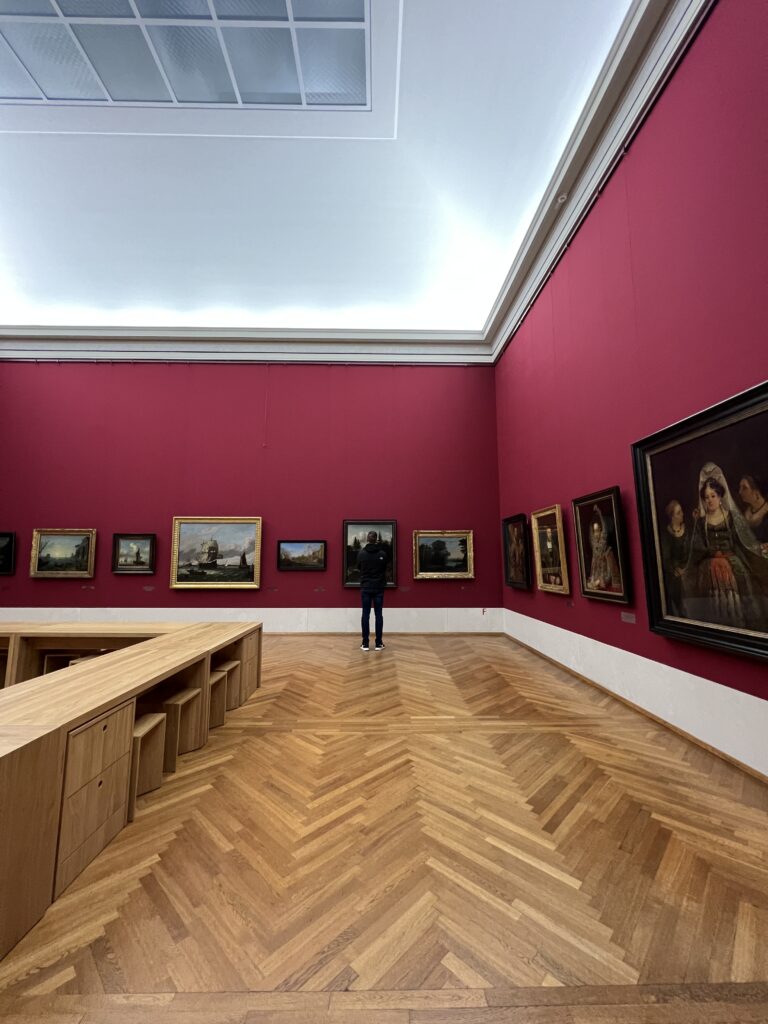
What to do in Munich
- Visit Marienplatz: Munich’s main square, home to the famous Glockenspiel clock tower (catch its fun show at select times during the day)
- Explore the Frauenkirche: Munich’s iconic twin-spired cathedral
- Tour the Residenz: The former royal palace of Bavarian monarchs, now a museum
- Visit the English Garden: A large public park with beautiful gardens, lakes, and walking paths
- Try Bavarian food and beer: Visit a traditional beer hall, such as the Hofbräuhaus or Augustiner Bräustuben, or a beer garden
- Explore the Viktualienmarkt: Munich’s largest outdoor food market, selling local and international cuisine
- Visit the Deutsches Museum: One of the world’s largest museums of science and technology
- Check out the Nymphenburg Palace: a beautiful baroque palace and garden complex on the outskirts of Munich
- Experience Oktoberfest: The world’s largest beer festival is held annually in Munich in September and October
- Take a stroll along the Isar River: a scenic river that runs through Munich and offers great views and outdoor activities
- Visit the Bavarian National Museum: a museum dedicated to the history and art of Bavaria
- Munich City Museum: Learn about the history of the city
- Watch the surfers at Eisbachwelle: The waves on the Eisbach river at the entrance to the Englischer Garten attract surfers and onlookers from around the world
- Take a day trip: Use Munich as a home base to take a day trip to Neuschwanstein Castle, Dachau, or Rothenburg
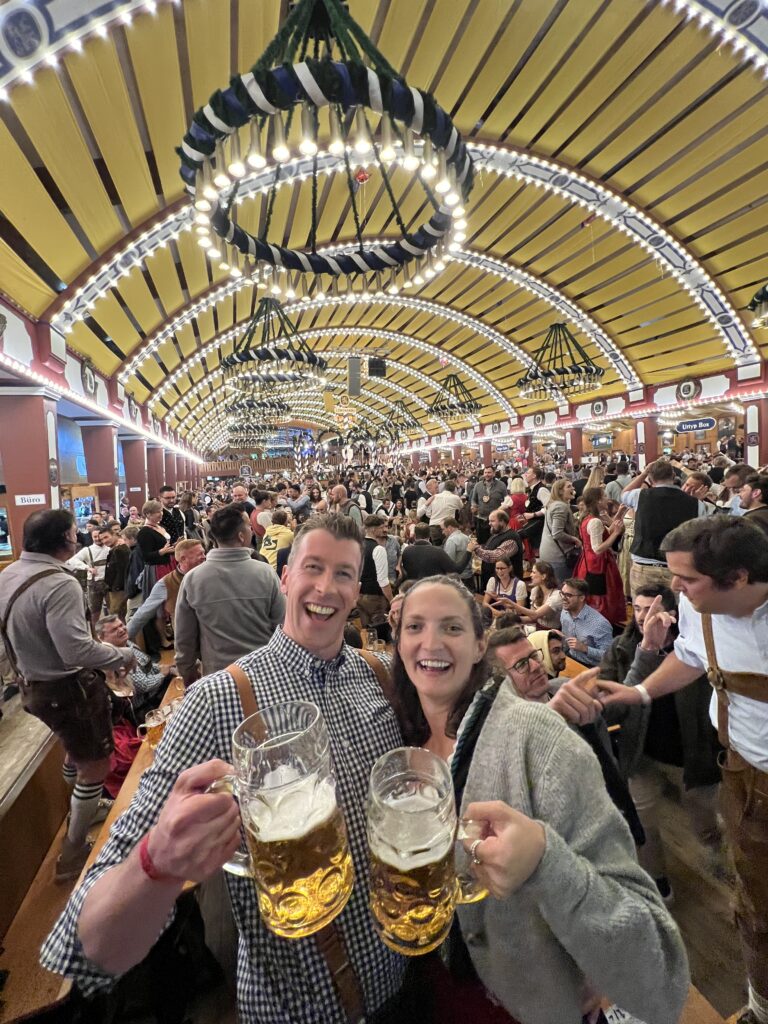
FAQ
What is Munich famous for? It’s famous for its beer and is home to the largest beer festival in the world, Oktoberfest.
Is Munich worth visiting? Yes!! If you are looking to explore Germany you should definitely add Munich to your list. There is a ton that this city has to offer for people of all ages and interests.
How many days in Munich is enough? We have 4 days in Munich but we did 1.5 of those days on day trips out of the city (Rothenburg and Dachau). Depending on how many museums, and galleries you want to visit, I’d say 2-3 days is enough to do the highlights.
Do they speak English in Germany? Mostly everyone we came across spoke English with the exception of a couple of restaurants that were off the tourist path and more targeted at locals but we still managed to make do with only knowing English. Lots of restaurants are also able to provide you with an English menu if you need it.
What is the best month to visit Munich? Munich is great in any season and in the winter you can visit the magical holiday markets around Bavaria, but most people travel there between April-May, and September-October (during Oktoberfest).

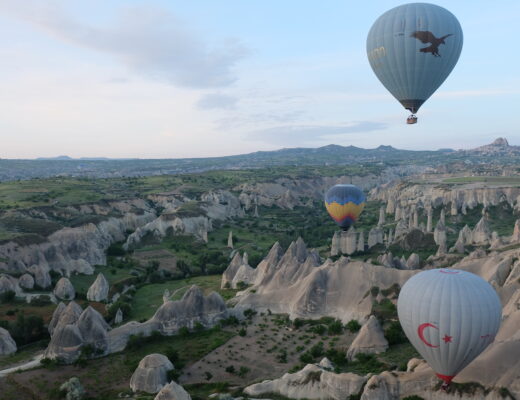
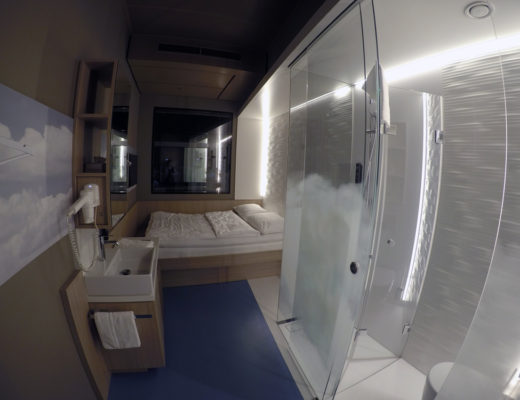
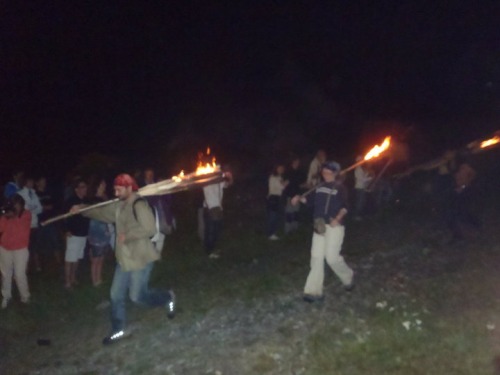

No Comments